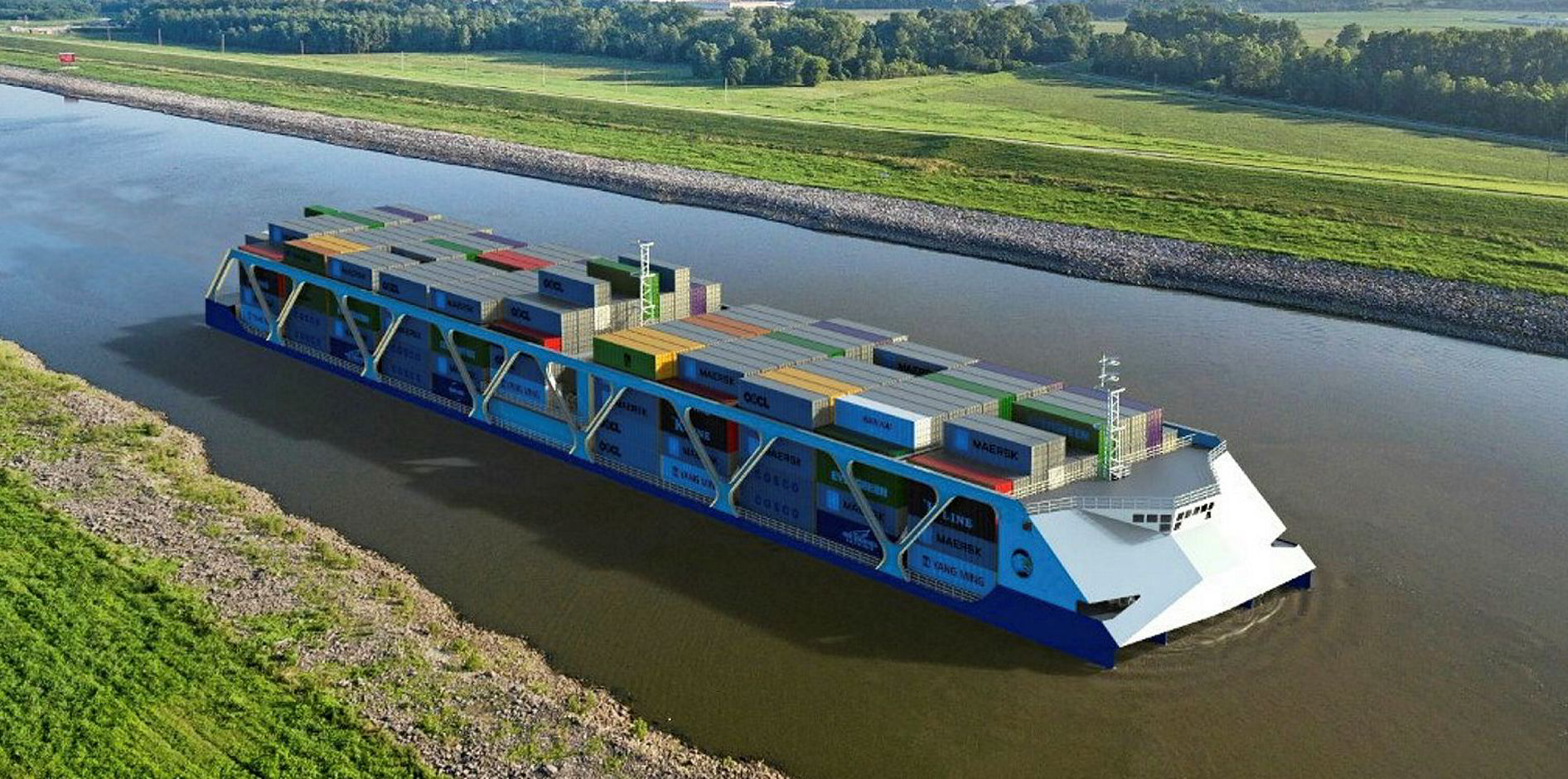The Mississippi River may one day have feeder containerships picking up goods as far north as St Louis for shipment across the Atlantic Ocean on ultra-large vessels.
Port of Plaquemines, a landing south of New Orleans in Louisiana, plans to add a privately owned boxship terminal to turn the Mississippi into a highway for international trade.
The Mississippi runs 2,320 miles (3,730 km) from Minnesota in the north to Louisiana on the US Gulf.
“We are in a globally competitive arena and farmers in the Midwest are competing with farmers in Brazil to supply the demand in China,” Sandy Sanders, executive director of the Port of Plaquemines, told TradeWinds.
American Patriot Holdings (APH), a US maritime investor and consultant, expects to provide LNG-fuelled, 2,375-teu feederships to carry goods between ports on the river and ultra-large containerships calling at the Port of Plaquemines.
APH would also have 1,700-teu vessels to ship commodities, including grains, resins and chemicals, on the river’s tributaries.
It plans to start out with four vessels, all of which would fall under the Jones Act domestic shipping law because they would sail only on the Mississippi and its branches. Under the Jones Act, ships operating in US waters must be locally built, owned by a domestic company and have US crews.
Moving greater volumes

The company may expand the fleet to a dozen vessels, depending on demand for the service.
Its boxships would be able to move much more volume than river barges, which can carry only about 300 teu, chief executive Salvatore Litrico said.
“We’re going to be exporting agricultural products, refrigerated products and household products,” he told TradeWinds.
“This is truly the marine highway initiative if you put this system in place ... We will also be bringing cargo in.”

The US Army Corps of Engineers plans to keep two areas north of the Port of Plaquemines dredged to 50 feet (15 metres) so that the feeders can keep carrying US goods to larger containerships for global trade.
“What we’re providing to the supply chain is a new vertically integrated transportation system,” Litrico said. “That system is going to create a new north-south trade lane that really doesn’t exist today for containerised cargo.”
The Port of Plaquemines, founded in 1954, has a deal with a major transatlantic liner to send 14,000-teu vessels initially to APH’s terminal before bringing in 23,000-teu ships, according to Sanders, and “a major global carrier has said, ‘I want in’.”
He would not identify the carrier because the terminal, which would have 5m teu of storage and could handle one ultra-large containership and two feederships at a time, is conducting a six-month due-diligence study.
The Port of Plaquemines signed a letter of intent with APH and Louisiana 23 Development Co — the project’s main backer — and plans to make an investment decision once the study is complete.
Several liner operators have invested in 23,000-teu boxships, including CMA CGM, HMM, OOCL, Cosco Shipping Lines, Hapag-Lloyd and Mediterranean Shipping Co.
LNG bunkering plans
The boxship terminal, which would cover 1,200 acres (4.85 sq km), could cost $4bn funded by APH, the port and investors through a public-private partnership, Sanders said.
The Port of Plaquemines already has a dozen terminals leased by shipowners, including Chevron, Halliburton, Phillips 66 and United Bulk Terminals.
Plans for the port also include an $8.5bn Venture Global LNG bunkering terminal, a $3.3bn Pointe LNG bunkering facility and a $2.5bn Plaquemines Liquids Terminal.
The site, which is expected to cover 5,000 acres, would also have two methanol plants: a $1.2bn facility owned by Castleton Commodities and a $3.6bn installation funded by IGP.
“Right now, I have about 2,500 acres,” Sanders said.







